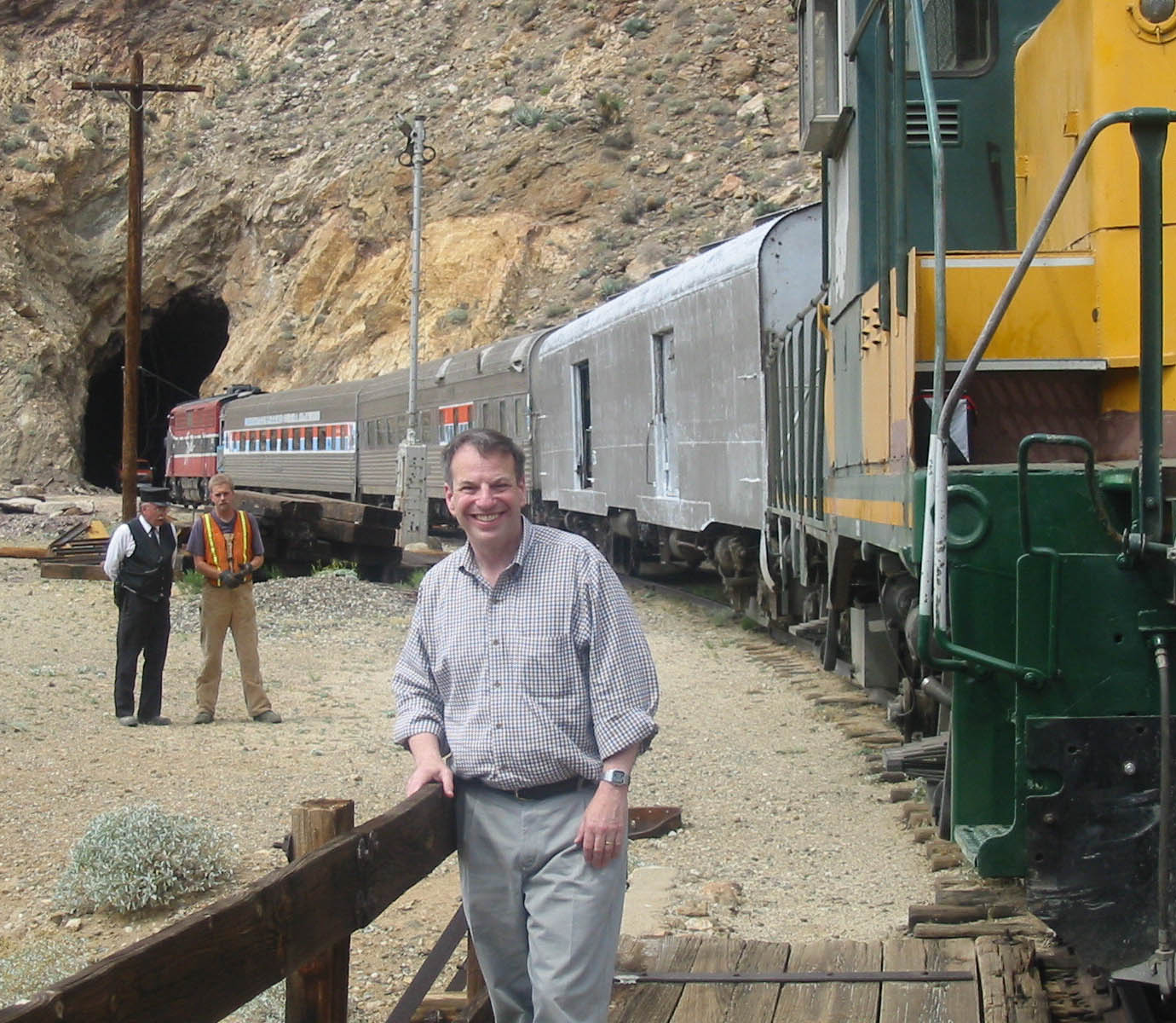|
U.S. Rep. Bob Filner (D-Calif.) predicts a 120-mile
"choo choo train" will have incredible effects on the economies of San
Diego and Baja California. Able to carry cargo from the Port of San
Diego to the east-bound Union Pacific Railroad, without first going through
crowded Los Angeles, Filner said the railroad will enable Pacific Rim shipping
companies to avoid logjams and get their products to inland destinations in the
United States more quickly. Filner, whose congressional
district stretches along the Mexican border from the Port of San Diego to the
Arizona state line, said the little Carrizo Gorge Railroad is the culmination of
a 15-year campaign in which he often faced opposition from U.S. Rep. Duncan
Hunter (R-Calif.), a congressman from a neighboring district who is today
chairman of the House Armed Services Committee.

U.S. Rep Bob Filner pauses at siding of 'job train.'
Because of the mountainous topography east of San Diego and the relative
flatness of parallel land to the south in Mexico, the train travels about half
its route in each country. From Filner's perspective, "this is a real
positive because it demonstrates that by working together Mexico and the United
States can produce jobs for each other." That's exactly opposite the
effect that the North American Free Trade Agreement (NAFTA) had for working
class people in his district, Filner said. The Democratic
congressman believes, if the Port of San Diego will build itself up to
accommodate more cargo, that San Diego will realize its long hoped-for destiny
as a depot for trade among the United States, Latin America, and the Far
East. "This will mean jobs for thousands of people, who
will be able to buy a house, send their kids to college and realize the American
dream," Filner said. "Tijuana
and San Diego were both cul-de-sacs, unable to move goods directly to the
eastern parts of their countries, but this jobs train will enable both cities
to do that."
The congressman said that the train hooks into Mexico's national railroad at the
city of Mexicali, which lies south of
the eastern portion of California. Similarly, he said, goods loaded in San Diego
can go on this railroad directly to the junction with the Union Pacific Railroad
in Plaster
City in Imperial County. The debate with Hunter was over
the potential of the train being used for illegal immigration from Mexico to the
United States. Hunter at one point dubbed the line "the illegal alien
express," but Filner said the Border Patrol and the U.S Customs Service was
far more sanguine about the prospect. "Of all modes of transportation, a
railroad is the easiest to control," Filner explained. "There is
just one track, and you can stop the train for as long as you want. The
Border Patrol and Customs said with a couple dozen people they would take care
of it."
The railroad in its original incarnation was called the San Diego and Arizona
Eastern Railroad. It was built in the early 20th century by sugar magnate
John Spreckels. But after storms and other disasters it fell into
disuse. Eventually, San Diego's Metropolitan Transit District took over
the tracks lying on the American side of the border, while the Mexican
government took control of the tracks on the Mexican side. The
Carrizo Gorge Railway, whose chief executive officer Gary Sweetwood is a
longtime railroad enthusiast, had been used on a limited basis for tours through
the steep Carrizo Gorge area and for cross border transport of U.S.-bound
sand and Mexico-bound propane.
Filner, a high-ranking member of the House Transportation Committee, said that
he was able to have $10 million set aside several years ago for the construction
of multi-modal transfer facilities that would ease the movement of containers
from ships to trains to trucks. Because the Port of San Diego is crammed
for ground space, "we need a place where trucks and trains can trade
things around, so there is a concept of an inland port."
Asked what is next now that the railroad is functioning, Filner replied that
there needs to be a marketing effort aimed at the "largest shipping firms
in the world, which may be looking for a West Coast alternative."
Additionally, he said, the Port needs to be reassured that there is sufficient
business to more than justify more infrastructure development. —Donald H. Harrison
|

